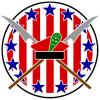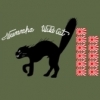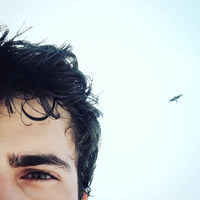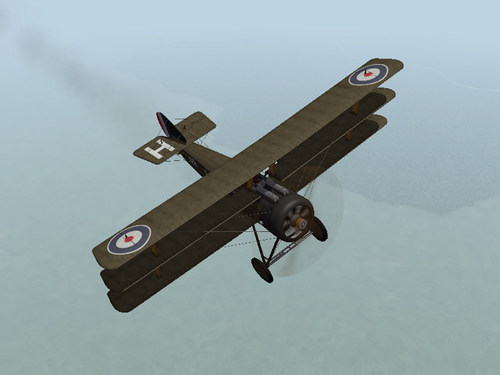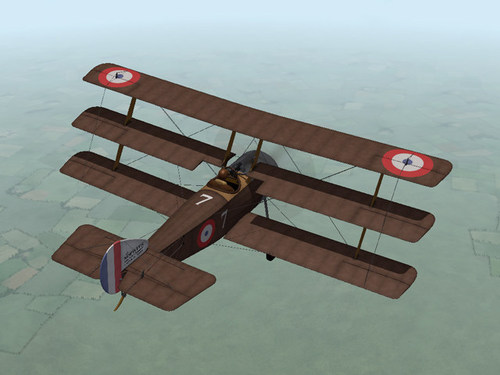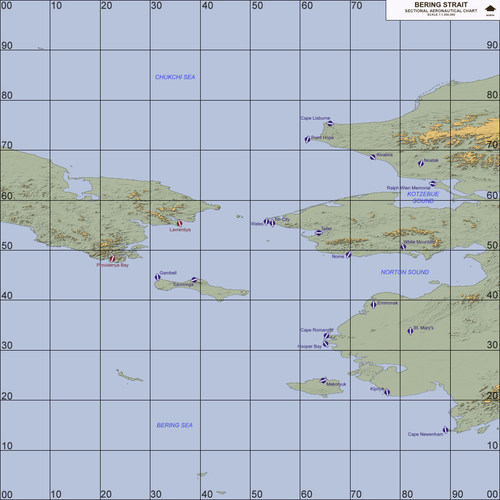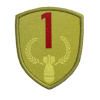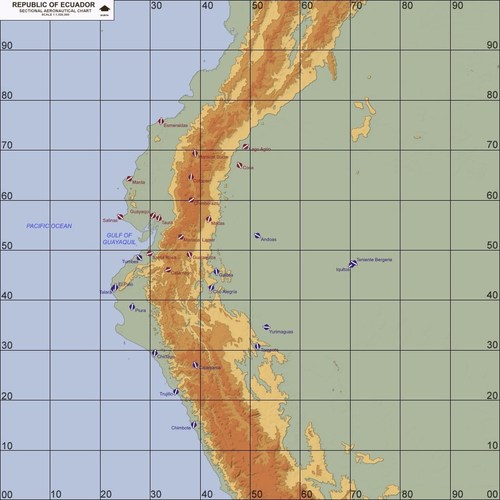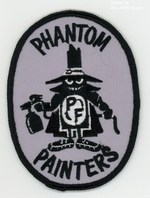Leaderboard
Popular Content
Showing most liked content on 12/15/2020 in Files
-
7 points
Version 1.0.0
634 downloads
This has been a labor of love for my all-time favorite fighter aircraft. The service period of this aircraft fits perfectly with the time period that the Strike Fighters 2 game engine gives its best: Gun armed jet fighters with short range missiles and early/ limited avionics. Changes: - The ‘SF2V Air & Ground War Expansion v.2.0 Gold’ and ‘F-8 DATA & LOADOUT v1.0 update’ here at CA were used as a starting point for this project. - Maximum G has been changed to 6.3 which is the airframe structural limit in all NATOPS publications. - There are automatically operating ‘fake’ leading edge droops (slats) that simulates the pilot being able to lower them a few degrees with a button on the throttle for cruising flight and manoeuvring flight (aka dog fighting). By ‘fake’ I mean they are not player operated in SF2 or linked to the 3D model but the aerodynamic effect is realistically simulated. You will notice the droop indicator in the cockpit will change with them however. If they were manually controlled in the game the AI would not use them correctly. - Single AIM-9 missiles and rails can be loaded instead of the Y-racks on all F-8 variants. This is done at the loadout screen (and by the loadout.ini file) it is set up so you cannot load single missiles/ rails and double missiles/ Y-racks at the same time. - Cannons harmonized as per NATOPS manual and gun accuracy adjusted to real world levels. - Adjustment to most decal positions and inclusion of Squadron codes on the wings. - Additional details added to most stock skins. - Additional squadron specific higher resolution skins with more accurate markings for that particular squadron. - Included for F-8J (69) is a proposed SEA camo overpaint for the VF-211 aircraft on detachment at Udorn in early 1972 to school USAF pilots in Dogfighting. The repaint was initially agreed to but it would have added 1200lbs so it was abandoned. If you wish to use it and fly DACT against USAF Phantoms you can load the extra 1200lb at the load out screen via a unique station specific hard point. - Overhaul of each data.ini and avionics.ini to bring them in line with the information in the F-8 NATOPS manuals, NATOPS supplements and F-8 Tactics manual. - More detailed pilots and ejection seats. - Fully compatible with ‘SF2V Air & Ground War Expansion v.2.0 Gold’ or Third Wire SF2V campaigns. - Additional year specific aircraft to better reflect physical and avionic changes. As well as correcting a few mistakes and omissions by Third Wire. - Below is the updated list of F-8 Crusader variants with the original Third Wire description where appropriate and the specific major changes made in addition to the general ones listed above: F-8C The F-8C (F8U-2) entered service in 1959. F-8C is powered by J57-P-16 afterburning turbojet and can reach speed of Mach 1.6. - Missing radar symbology added and radar performance/ parameters corrected. The radar cursor for selecting a target is a long horizontal line that moves up from the bottom of the scope and is only adjustable in range and not azimuth to select a specific radar contact. F-8C (66) In 1966, F-8C received ALQ-51 ECM and chaff dispensers under project "SHOEHORN", after A-4 and F-4 were upgraded. The cannon ammo capacity is reduced slightly to make room for the ECM black box. - Uses the TW F-8D model modified into a F-8C in order for it to have the Y-rack Fuselage weapon rails. F-8D The F-8D (F8U-2N) was the all-weather interceptor version, entering service in 1960. It is equipped with AN/APQ-83 radar and more powerful J57-P-20 engine. - Missing radar symbology added including steering circle, aiming dot, break X and missile max range. F-8D (66) F-8D also received ALQ-51 ECM and chaff dispensers under project "SHOEHORN" in 1966. The cannon ammo capacity is reduced slightly to make room for the ECM black box. F-8E The F-8E (F8U-2NE), entering service in 1962, was the final production version of the Crusader. It is equipped with better AN/APQ-94 radar, and two underwing pylons for air-to-ground ordnance. - Radar frame lock, range and shoot cue lights all completely changed and now function correctly. See screenshot for more information. - Missing radar symbology added including range rate circle, which also doubles as the steering circle, aiming dot, break X and missile max range. - Missile firing order and cockpit weapon station section dial corrected. F-8E (66) F-8E also received ALQ-51 ECM and chaff dispensers under project "SHOEHORN" in 1966. The cannon ammo capacity is reduced slightly to make room for the ECM black box. - Significant use of the AIM-9C as after a lot of research it turns out they were commonly carried over Vietnam in this period, notably by VF-211. F-8E(FN) The F-8E(FN) is the French Aeronautique Navale version of the F-8 armed with Matra R.530 missiles. Nicknamed "Le Crouze" by the French crew, it operated off Clemenceau-class carriers from 1964 to 1994 until they were upgraded to F-8P standard. F-8E(FN) introduced many of the features, such as double-hinged leading edge flaps and drooping ailerons, that were later incorporated into remanufactured F-8J for the US Navy. - Equipped with the nose mounted IRST system like the USN F-8D and E. - This is the TW F-8J model modified into a F-8E(FN) so the DLC is NOT required. - Radar frame lock, range and shoot cue lights all completely changed and now function correctly. See screenshot for more information. - Location of Matra R.530 missile rails corrected. F-8E(FN) (70) - The nose mounted IRST system is removed from all French aircraft. F-8P(FN) - 17 F-8E(FN) are upgraded to extend their service life, included is the Sherloc RWR system. - This is the TW F-8J model modified into a F-8P(FN) so the DLC is NOT required. F-8P(FN) (94) - F-8P(FN) are fitted with a GPS navigation system and antenna. F-8H Starting in 1967, F-8Ds were remanufactured as F-8H, with improved AN/APQ-149 radar, ALQ-51 ECM, and the same underwing pylons as F-8E. - Retains the AN/APQ-83 radar from the F-8D but uses the physically larger and higher resolution cockpit radar display from the F-8E. - Missing radar symbology added including steering circle, aiming dot, break X and missile max range. - Radar frame lock, range and shoot cue lights all completely changed and now function correctly. See attached for more information. - Missile firing order and cockpit weapon station section dial corrected. F-8H (69) F-8H is re-engined in 1969 with more powerful J57-P-420 engine. It also has improved ALQ-100 ECM in a larger pod, and full cannon ammo capacity restored. - Improved AN/APQ-149 radar fitted in place of the AN/APQ-83. - Additional missing radar symbology added including separate larger range rate circle and separate smaller steering circle. - A lot of fleet F-8H around this period have had their Nose IRST system (temporarily?) removed. - Retains the ALQ-51 ECM. F-8H (74) - After the Vietnam war F-8H has the improved ALQ-100 ECM in a larger pod installed, and full cannon ammo capacity restored. F-8J F-8J is a remanufactured F-8E with improved AN/APQ-149 radar, ALQ-51 ECM, and other improvements such as double-hinged leading edge flaps and drooping ailerons. However, its performance has suffered significantly due to increases in its weight. - Improved AN/APQ-124 radar installed. - Radar frame lock, range and shoot cue lights all completely changed and now function correctly. See screenshot for more information. - Missing radar symbology added including separate larger range rate circle, separate smaller steering circle, aiming dot, break X and missile max range. - Missile firing order and cockpit weapon station section dial corrected. F-8J (69) To restore lost performance due to increased weight, F-8J is re-engined in 1969 with more powerful J57-P-420 engine. It also has improved ALQ-100 ECM in a larger pod, and full cannon ammo capacity restored. F-8J (75) - In 1975 the remaining fleet F-8J (along with the RF-8G) receive the ALQ-126 ECM and ALR-45/50 RHAW RWR. The nose mounted IRST system is permanently removed. F-8J (75) [w RWR] - Identical to F-8J (75) above except: - The cockpit radar display functions as a Vector RWR and not a radar. This is because in real life the pilot could change the radar scope from displaying radar images or displaying the RWR images. The F-8J did not have a separate RWR display. There was a setting in which it would be displaying radar images but if a missile launch was detected the threat bearing line would be displayed flashing over top of the radar images. Not possible in SF2 unfortunately. To install: 1, Unpack and drop into your main mods folder. 2, Override when prompted. Credits: - ‘F-8 DATA & LOADOUT v1.0 update’ by FANATIC MODDER. - ‘SF2V Air & Ground War Expansion v.2.0 Gold’ by Eburger68 and team. - ‘F-8E(FN) Crouze & F-8P(FN) Crouze Prolongé 1.1’ by Paulopanz, Denis Oliveira & Coupi. - Weapons by Ravenclaw_007. - Template by Geary. - Blade. - Wrench. CombatAce fair use agreement applies. Enjoy, Dan. -
7 points
Version 1.0.0
258 downloads
The French Air Force ordered 20 Mirage F1Bs, a two-seat operational conversion trainer; these were delivered between October 1980 and March 1983. The extra seat and controls added only 30 cm (12 in) to the length of the fuselage, but at the cost of less internal fuel capacity and the loss of the internal cannon. The empty weight increased by 200 kg (440 lb), partly due to the addition of two Martin-Baker Mk 10 zero-zero ejection seats, in place of the Mk 4 used in the F1C, which had a forward speed limitation. See the readme file for more informations. Enjoy The Mirage F-1 Team. -
5 points
Version 1.0.0
132 downloads
The Sopwith Triplane, also known as the "Tripe" or "Tripehound," was introduced at the end of 1916. By mid 1917, several British and French naval squadrons were equipped with the plane. The narrow chord of the three staggered wings gave the pilot an excellent field of view and gave the plane an exceptional rate of climb as well as outstanding agility. The Triplane was considered an exceptional fighter and stayed in service until replaced by the Sopwith Camel in late 1917. Captured Sopwith Triplanes inspired the development of the more famous Fokker Dr.1. My model of the Sopwith Triplane has the smaller tail assembly introduced early in 1917. Earlier planes had a larger tail plane nearly identical to the tail of the Sopwith Pup. Most Triplanes were equipped with a single Vickers machine gun mounted on the fuselage. A small number of Sopwith Triplanes had two guns. This is the two gun version. My Sopwith Triplane has a skin, with appropriate decals, for the "Black Flight" of the RNAS 10 squadron. Note - these skins are NOT interchangeable with the skins for my other Sopwith Triplanes. A fully functional cockpit is included, along with my skinning templates. I have included a sound file for the Clerget 130 hp engine, but you may already have it. Credits Although he's very busy these days, Ojcar found the time to make the FM for this plane. My thanks to him. The sound file included with this plane came with Sinbad's series of Sopwith Strutters, so you may already have it. I included it with this download in case you don't. Historical Note The Black Flight had five planes, each with its name painted at the cockpit. I have added 15 fictitious names in order to complete the decal set. Installation Instructions For FE1 - Unzip the file and move the folder named "SopwithTripe2Gun" into the FirstEagles/Objects/Aircraft folder. My Triplane uses the sound file that came with Sinbad's series of Strutters, so you may already have it. If you don't, copy the file named "RotaryEngineClerget130" from my Sounds folder into your FirstEagles/Sounds folder. For FE2 - Unzip the file and move the folder named "SopwithTripe2Gun" into the FirstEagles/Objects/Aircraft folder. Then in the FirstEagles/Objects/Decals folder, create new folder named "SopwithTripe2Gun". Move the folder named "D" from the Aircraft/SopwithTripe2Gun folder into the Decals/SopwithTripe2Gun folder you just made. My Triplane uses the sound file that came with Sinbad's series of Strutters, so you may already have it. If you don't, copy the file named "RotaryEngineClerget130" from my Sounds folder into your FirstEagles/Sounds folder. -
3 points
Version 1.0.0
111 downloads
The Sopwith Triplane, also known as the "Tripe" or "Tripehound," was introduced at the end of 1916. By mid 1917, several British and French naval squadrons were equipped with the plane. The narrow chord of the three staggered wings gave the pilot an excellent field of view and gave the plane an exceptional rate of climb as well as outstanding agility. The Triplane was considered an exceptional fighter and stayed in service until replaced by the Sopwith Camel in late 1917. Captured Sopwith Triplanes inspired the development of the more famous Fokker Dr.1. The first planes produced had a tail plane nearly identical to the tail of the Sopwith Pup. Early planes also had a 110hp Clerget engine. A smaller tail plane was introduced early in 1917. The engine was also replaced with a more powerful 130hp Clerget engine. This is an early version of the Sopwith Triplane with a wider tail and lower powered engine. It has two skins, one French and one British, with appropriate decals. Note - these skins are NOT interchangeable with the skins for my other Sopwith Triplanes. A fully functional cockpit is included, along with my skinning templates. I have included a sound file for the Clerget engine, but you may already have it. Credits Although he's very busy these days, Ojcar found the time to make the FM for the early Sopwith Triplane. My thanks to him. I have included a sound file for the Clerget engine created by Nixou. It has been used on other planes, so you may already have it. I included it with this download in case you don't. Historical Note The 110 hp Clerget engine was the 9Z. I don't have a sound file for the 9Z so I used a sound for the Clerget 9B instead. Installation Instructions For FE1 - Unzip the file and move the folder named "SopwithTriplane" into the FirstEagles/Objects/Aircraft folder. I have included Nixou's sound for the Clerget engine. It has been used with other planes, so you may already have it. If you don't, copy the file named "clerget9b2m2" from my Sounds folder into your FirstEagles/Sounds folder. For FE2 - Unzip the file and move the folder named "SopwithTriplane" into the FirstEagles/Objects/Aircraft folder. Then in the FirstEagles/Objects/Decals folder, create new folder named "SopwithTriplane". Move the folder named "D" from the Aircraft/SopwithTriplane folder into the Decals/SopwithTriplane folder you just made. I have included Nixou's sound for the Clerget engine. It has been used with other planes, so you may already have it. If you don't, copy the file named "clerget9b2m2" from my Sounds folder into your FirstEagles/Sounds folder. -
1 point
Version 1.06
1,500 downloads
Alaska, Bering Strait (1955-2018) Terrain April 13th, 2017 (1st Release) by Menrva >For Strike Fighters 2: Europe, Recommended Full-5 Merged This is a complete remake of the DBS terrain made by Major Lee and further tweaked by Wrench. Wrench kindly allowed me to improve upon his work; the entire map has been retargetized and retiled using a whole new tileset, combining tiles from Brain32 and Stary. Some water bodies, lakes and rivers have been hand-tiled. Most of the terrain has been hand-tiled to a great extent. Numerous target areas have been added in order to expand playability, targets of opportunity and year range. This terrain features a fresh new 250m resolution heightmap (instead of the stock 500m resolution), allowing for greater details and precision in elevation changes; overall it provides the whole terrain with a better look. The terrain spans from June 22, 1955 (the date of the first known Cold War incident in the Bering Straits between the U.S. and the Soviets) to December 31, 2018. I didn't bother to add all of the possible RL airports. However, when compared to the original DBS terrain, this one has a lot more to offer, especially on the Blue Side. The Soviets (Red Side) only have two flyable airfields. Don't even try to fly Red Side long-range bombers from said small airfields. Reason for this is that the original DBS terrain was rather fictional and included airbases which in reality didn't and don't exist. I made major researches and what I am providing here is a realistic representation of the area, given the terrain engine limitations. Anyway, I added some Off Map Airbases for both Blue Side and Red Side; if you have SF2NA, you can benefit from this addition, as long range AI flights can be generated from such airbases. The area in reality is pretty barren, so don't expect a terrain with much targets. Still, you can enjoy CAS missions at St. Lawrence Island and Lopp Lagoon being invaded by Soviet forces, and the usual dogfights over the Bering Straits. Ground Objects are not included. You can obtain them from Wrench's original DBS terrain release. Only very few of them should be needed anyway. >Credits (in no particular order): -Major Lee, who came up with the idea of recreating such an interesting scenario in the Strike Fighters world. -Wrench, who kindly allowed me to improve upon his work by giving me a blank cheque and trusting my capabilities. Thank you, sir! -swambast, who provided me with invaluable help in tracking and fixing common and uncommon bugs. -gerwin, whose TFDtool has proved to be essential in today's terrain making. If the terrain is pretty accurate to RL it's also because of him. I included his very nice Airfield 7+8 Addon Pack, too. -mue, for the improved shaders he made, which I have included and reworked for the terrain, and for the tools he made for SF2 modding. -luk1978, for the snowy runway textures he made for his Korean terrain repaint (unofficially released) and the waternormal bitmap he shared at the SF2 screenshots thread. Your mods are very interesting! -MigBuster, I have included some of his great hi-res textures for runways. -Brain32, for the original hi-res DBS tileset he made and which I have expanded with my bad transition tiles. -Stary, because his tilesets are pure art. I borrowed a TOD and few tiles from his excellent Kamchatka tileset repaint. -Gepard, for his great tutorials about terrain making, in the SF1 Knowledge Base at CombatACE. It's a gold mine! -krfrge, who has produced a tutorial for recreating SF2-like planning maps, which prompted me to work on templates and my own high quality planning maps. Thank you very much! -comrpnt, for his Approach and Airfield Lighting Pack mod packages for SF1 series, which I reworked and included. Because the original terrain was born from Major Lee and was later tweaked a number of times by Wrench, I included the ReadMe files from the original packages, to the end of giving proper credit to everyone involved directly or not. >Disclaimer: This is a freeware; yet it can be redistributed ONLY in other CombatACE mods/mod packages. Any changes to the terrain package's files and/or any copy-and-paste attempts of their contents are NOT authorized if you plan to release them in other mods. But permission might be granted to those who request it to me at CombatACE. This terrain may NOT in any way, shape or form be used in any payware additions. -
1 point
-
1 point
Version 1.07
1,544 downloads
Iraq, Western Asia (1980-2003) Terrain February 13th, 2017 (1st Release) by Menrva >For Strike Fighters 2, Recommended Full-5 Merged This is a complete remake of the DS/IR terrain released long time ago by Wrench. The entire map has been retargetized and retiled using a whole new tileset, combining tiles from JSF_Aggie, Stary, Centurion-1 and my bad transition tiles. All major water bodies, lakes and some minor rivers have been hand-tiled. The Caspian Sea coast had to be hand-tiled as well. Numerous target areas have been added in order to expand playability, targets of opportunity and year range. This terrain features a fresh new 250m resolution heightmap (instead of the stock 500m resolution), allowing for greater details and precision in elevation changes; overall it provides the whole terrain with a better look. The terrain spans from September 22, 1980 (the beginning of the Iran/Iraq War) to May 1, 2003 (the end of major combat operations of Operation Iraqi Freedom); it is designed for the Iran/Iraq War, Operation Desert Shield, Operation Desert Storm, Operation Desert Fox and Operation Iraqi Freedom. Iraq is Enemy, Iran is Friendly, other countries are Friendly as well. Due to limitations in the terrain engine, and not wanting to make three different terrains, I opted to set Iran as Friendly together with other countries such as Saudi Arabia. While you might see US planes spawn in Iran during Single Missions even if the 1979 Iranian Revolution already happened, it's up to the users to play with missions in the editor to fix any historical oddities. Targets reflect Real World events as accurately as possible; for instance, after the invasion of Kuwait by Iraq, Kuwaiti airfields are set as Neutral, enemy targets appear inside Kuwait, etc. Some airfields won't be available after a certain date and/or will change name according to historic changes. Various Operation Desert Storm expeditionary bases and FOBs have been added, and will appear only during Operation Desert Storm dates. All main targets are in their Real World locations (I tried to be as accurate as possible, to such a level that even surpasses ThirdWire's stock terrains). Shiraz Int'l Airport and Prince Sultan Airbase are beyond the Wall. However, if you have SF2NA, long range AI flights can be generated from such airbases. Ground Objects are not included. You can obtain most of them from Wrench's original Iran-Iraq terrains, or from other mod packages. >Credits (in no particular order): -Wrench, who reworked the original terrain and provided the CombatACE community with plenty of mods and scenarios to play with. He gave me invaluable advise, the tools I needed and introduced me to the beautiful, exhausting world of terrain modding/making. Thank you, sir! -swambast, who offered to build two high quality 3D models (Mosul Dam and Mosul Grand Mosque), featured for the first time in this terrain, it's an honor! He also provided major help in tracking and fixing common and uncommon bugs. If the terrain is stable (no CTDs), it's his merit! -Nyghtfall, for creating 3d models of the Kuwait Water Towers and Kuwait Freedom Towers. -tiopilotos, for providing reworked .tga tiles with new alpha channels. Much appreciated! -Spudknocker, who helped me complete the 1980-2003 beta version of the terrain, providing additional target areas. -gerwin, whose TFDtool has proved to be essential in today's terrain making. If the terrain is pretty accurate to RL it's also because of him. I included his very nice Airfield 7+8 Addon Pack, too. -MigBuster, I have included some of his great hi-res textures for runways. -mue, for the improved shaders he made, which I have included and reworked for the terrain, and for the tools he made for SF2 modding. -luk1978, for the waternormal bitmap he shared at the SF2 screenshots thread. Your mods are very interesting! -Crusader, who provided me with the info I needed about ODS and other stuff related to targets. -JSF_Aggie, for his high quality DS tileset, which I have expanded with my horrible transition tiles. -7eleven, who directed me to a website filled with Desert Storm related info. -Centurion-1, since I used some tiles from his Desert 4 Mountain Regions+ Addon. I tried to contact you for permission, but it seems RL got in your way. Your WIP mod about the Iran/Iraq war gave me the motivation to complete this terrain. The least I can say is thank you. Best of luck, mate! -Stary, because his tilesets are pure art. I borrowed a few TODs and tiles from his excellent IsraelME tileset. -Gepard, for his great tutorials about terrain making, in the SF1 Knowledge Base at CombatACE. It's a gold mine! -Stratos, who supported me support during the terrain's development. -krfrge, who has produced a tutorial for recreating SF2-like planning maps, which prompted me to work on templates and my own high quality planning maps. Thank you very much! -comrpnt, for his Approach and Airfield Lighting Pack mod packages for SF1 series, which I reworked and included. I am totally sure I missed someone, especially because the terrain was born from Wrench's original ones. So I also included Wrench's original readme files from his IR and IR2003 terrains to the end of giving proper credit to everyone involved directly or not. >Disclaimer: This is a freeware; yet it can be redistributed ONLY in other CombatACE mods/mod packages. Any changes to the terrain package's files and/or any copy-and-paste attempts of their contents are NOT authorized if you plan to release them in other mods. But permission might be granted to those who request it to me at CombatACE. This terrain may NOT in any way, shape or form be used in any payware additions. -
1 point
Version 1.01
738 downloads
Ecuador, Northwest South America (1981-1998) Terrain August 13th, 2018 (1st Release) by Menrva, tiopilotos and Stratos >For Strike Fighters 2, Recommended Full-5 Merged I am proud to present a new scratch-made terrain, the result of a joint effort of modders! Initially conceived by Centurion-1, the terrain was later salvaged by Stratos, who offered to help in its development together with tiopilotos. Stratos helped by hand-tiling most if not all the incredibly long rivers in the Amazon rainforest. The terrain later received an impressive tileset produced by tiopilotos! You guys have my deepest gratitude! The terrain completely covers Ecuador, a great portion of Peru, and even touches Colombia and Brasil. However, only Peru and Ecuador have been targetized at this stage. Numerous target areas, such as civilian airports and airstrips, have been added in order to expand playability, targets of opportunity and year range. This terrain features a fresh new 250m resolution heightmap (instead of the stock 500m resolution), allowing for greater details and precision in elevation changes; overall it provides the whole terrain with a better look. The terrain spans from January 28, 1981 (the beginning of the Paquisha Incident) to October 26, 1998 (when a resolution of the Ecuadorian-Peruvian territorial dispute was agreed upon through the Brasilia Presidential Act); it is designed for the Paquisha War of 1981 and the Cenepa War of 1995. Most air-to-ground missions (armed recon, close air support, etc.) take place at the border between Peru and Ecuador, to provide an even more realistic scenario. As in reality, there are few SAM sites placed at their precise Real World locations. Targets reflect Real World events as accurately as possible; for instance, some border outposts will appear only after a certain year, according to historic changes. Off Map Airbases have been added and long range AI flights can be generated from them, if you have SF2NA. Ground Objects are not included. It's up to the user to find and obtain anything that can be useful for the proposed terrain's scenarios. >Credits (in no particular order): -Centurion-1, for his interest in recreating such scenario in the Strike Fighters world. I heard RL got in your way, so... best of luck, mate! -tiopilotos, for the massive tileset he produced, and for his continuous support in all my terrain modding efforts. Thank you very much! -Stratos, for he brought to attention Centurion-1's unfinished terrain and offered to help realize it. -swambast, who provided me with invaluable help in tracking and fixing common and uncommon bugs. -gerwin, whose TFDtool has proved to be essential in today's terrain making. If the terrain is pretty accurate to RL it's also because of him. I included his very nice Airfield 7+8 Addon Pack, too. -mue, for the improved shaders he made, which I have included and reworked for the terrain, and for the tools he made for SF2 modding. -luk1978, for the waternormal bitmap he shared at the SF2 screenshots thread. Your mods are very interesting! -MigBuster, I have included some of his great hi-res textures for runways. -Stary, for the various hi-res tilesets and TODs he made, which have been re-used in this tileset. -Gepard, for his great tutorials about terrain making, in the SF1 Knowledge Base at CombatACE. It's a gold mine! -krfrge, who has produced a tutorial for recreating SF2-like planning maps, which prompted me to work on templates and my own high quality planning maps. Thank you very much! -comrpnt, for his Approach and Airfield Lighting Pack mod packages for SF1 series, which I reworked and included. Although scratch-made, the terrain makes use of most objects and target layouts from Wrench's Panama terrain; because of this, I included the ReadMe file from that package, to the end of giving proper credit to everyone involved directly or not. >Disclaimer: This is a freeware; yet it can be redistributed ONLY in other CombatACE mods/mod packages. Any changes to the terrain package's files and/or any copy-and-paste attempts of their contents are NOT authorized if you plan to release them in other mods. But permission might be granted to those who request it to me at CombatACE. This terrain may NOT in any way, shape or form be used in any payware additions.
Important Information
By using this site, you agree to our Terms of Use, Privacy Policy, and We have placed cookies on your device to help make this website better. You can adjust your cookie settings, otherwise we'll assume you're okay to continue..

